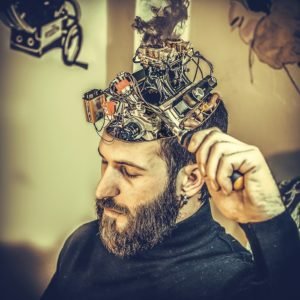Natural language processing is the technology used to help computers understand the natural language of humans.
It is not easy to understand how we communicate.
Leand Romaf, an experienced software engineer who is passionate about teaching people how the Artificial Intelligence system works, says, “In recent years, significant successes have been achieved in empowering the computer as we understand the language. “
This article will give a simple introduction to natural language processing and how it can be obtained.
What is Natural Language Processing?
Natural language processing, which is usually shortened as NLP, is a branch of artificial intelligence that deals with the interaction between computers and humans using natural language.
The ultimate objective of NLP is to read, understand, understand and make human languages.
Most NLP techniques depend on machine learning to derive meaning from human languages.
In fact, a typical conversation between humans and machines using natural language processing can be as follows:
1. Talks to a human machine
2. The machine captures the audio
3. Audio is a text conversion
4. Processing of text data
5. Data takes place in audio conversion
6. The machine responds by running audio files
NLP is used for whom?
Natural language processing is the driving force behind the following general applications:
Language translation applications such as Google Translate
Word processors like Microsoft Word and Grammarly, which employ NLP to check the grammatical accuracy of texts.
Interactive Voice Response (IVR) applications are used in the call center to answer some users’ requests.
Personal Assistant Apps like OK Google, Siri, Cortana, and Alexa
Why is NLP difficult?
Natural language processing is considered a difficult problem in computer science. This is the nature of human language that makes NLP difficult.
The rules that determine the passage of information using natural languages are not easy to understand.
Some of these rules can be high-level and abstract; For example, when a person uses satirical remarks to pass the information.
On the other hand, some of these rules may be of low level; For example, using the letter “s” to represent the plurality of objects.
To understand the human language widely, both words need to be understood and how it is done that the purpose of the concept is to give the message.
While humans can easily master a language, the ambiguities and impenetrable features of natural languages are such that it makes it difficult for NLP to be applied to machines.
How does natural language processing work?
NLP emphasizes the implementation of algorithms for identifying and removing natural language rules so that the unstructured language data can be converted into a form that the computer can understand.
When the text is provided, the computer will use the algorithms to find the meaning associated with each sentence and collect the necessary data from them.
Occasionally, a computer may fail to understand the meaning of a sentence, which can have ambiguous consequences.
For example, in the 1950s, a humorous event occurred during the translation of some words between English and Russian languages.
Here is the Bible sentence that requires translation:
“The spirit is ready, but the flesh is weak.”
Here is the result when the sentence was translated back into Russian and English:
“Vodka is good, but meat is rotten.”
Development of natural language processing
While natural language processing is not a new science, the technique is rapidly moving forward to increase interest in human-to-machine communication, availability of large data, powerful computing and enhanced algorithms.
As a human, you can speak and write in English, Spanish or Chinese. But the basic language of a computer – known as machine code or machine language – is largely out of place for most people. At the lowest levels of your device, not with communication words, but through people who generate millions of zeros and logical actions.
In fact, programmers used the punch card to communicate with the computer 70 years ago. This manual and difficult process are understood by relatively few people. Now you can say, “Alexa, I like this song,” and a device playing music in your house will reduce the volume and answer, “OK.” The rating was saved, “in a human voice. Then it adopts its algorithm to run that song – and others like it – next time you listen to that music station.
Let’s take a closer look at that conversation. Your device is activated when you hear it speak, understand the clear intention in the comment, execute an action, and provide feedback in a well-formed English sentence in approximately five seconds of space. NLP made possible full dialogue with other AI elements like machine learning and deep learning.



